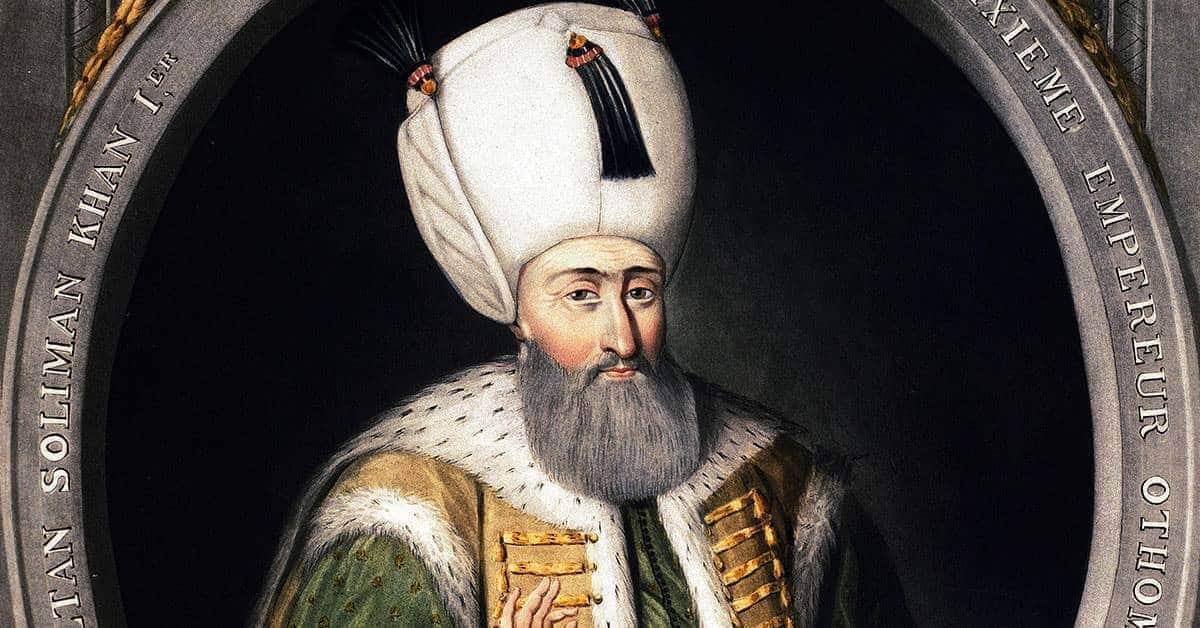Suleiman the Magnificent also spelled ‘Suleyman,’ was the Ottoman Sultan from 1520 to 1566. Also known as ‘the Lawgiver,’ he is often revered as one of the greatest Ottoman rulers because the Empire reached the peak of its political and military power when he was Sultan. During his reign, the state ruled over anywhere between 15 and 25 million people. Despite his many achievements, there is a school of thought which suggests he is overrated. Let’s take a look at three areas where he seemingly excelled and three where he is perhaps guilty of underachievement.
Success #1 – He Helped Expand the Empire to its Peak
Suleiman became Sultan in September 1520 when his father, Selim I, died. Although Suleiman was 26 years of age by the time he took the throne, he was the first Ottoman Sultan to rule without having any prior military experience. During Selim’s campaigns in the east, he left Suleiman behind to govern Istanbul. Also, his Viziers were all experienced men so if he showed any weakness his position would have been under threat.

He responded by launching a series of initially successful campaigns. Suleiman set his sights on the capture of Belgrade, something his grandfather, Mehmed II, failed to achieve. By capturing the city from the Kingdom of Hungary, the Ottomans could remove the threat of the Hungarians and Croats. They were the main obstacle in the path of further Ottoman expansion in Europe because the Bulgarians, Byzantines, Serbs, Albanians, and Bosniaks had already been defeated.
Suleiman surrounded Belgrade and captured the city in August 1521. The next step was to conquer the Eastern Mediterranean island of Rhodes. In 1522, he set sail with around 100,000 men and captured the islands after a five-month siege. One of his greatest victories came at the Battle of Mohacs on August 29, 1526. Suleiman’s army defeated the Hungarians who were led by King Louis II. The Ottoman army of up to 70,000 lost just 1,500 men compared to up to 20,000 on the Hungarian side.
After taking Buda in 1529, he was unsuccessful in his conquest of Vienna in the same year and was forced to raise his siege. Further campaigns in Hungary between 1541 and 1543 led to the partition of Hungary between the Ottomans, the Principality of Transylvania and the Habsburg Monarchy. Further conquests during his reign included Timisoara in 1532, Aden in 1548 and Transylvania in 1562. The Ottomans enjoyed some success at sea with wins at Nice in 1543 and Menorca in 1548 under the command of Admiral Barbarossa.
He was in the midst of a campaign against Austria when he died outside Szigetvar in Hungary on September 6, 1566. During his reign, Ottoman territory doubled, and the Empire was in exceptional shape. It was thriving in an economic sense, and its army was feared throughout Europe. However, a closer look at Suleiman’s military career reveals more than a few failures and flaws.

